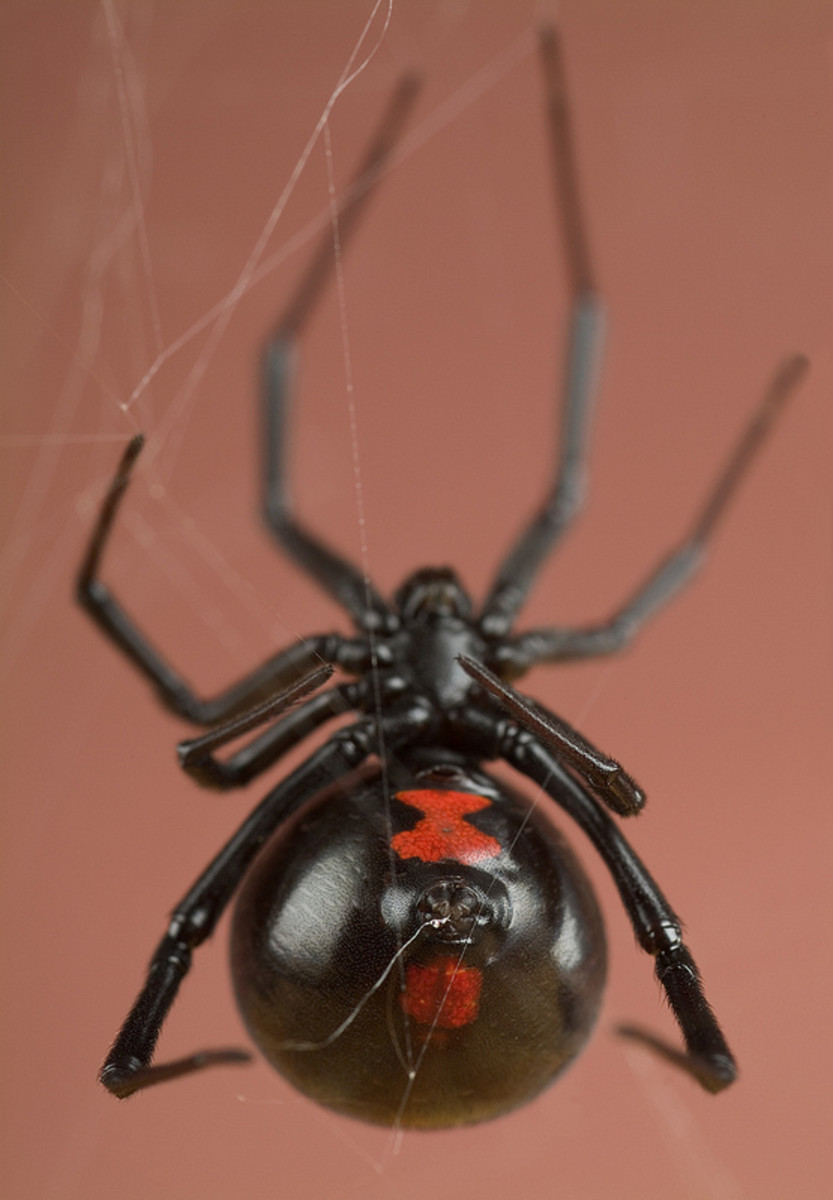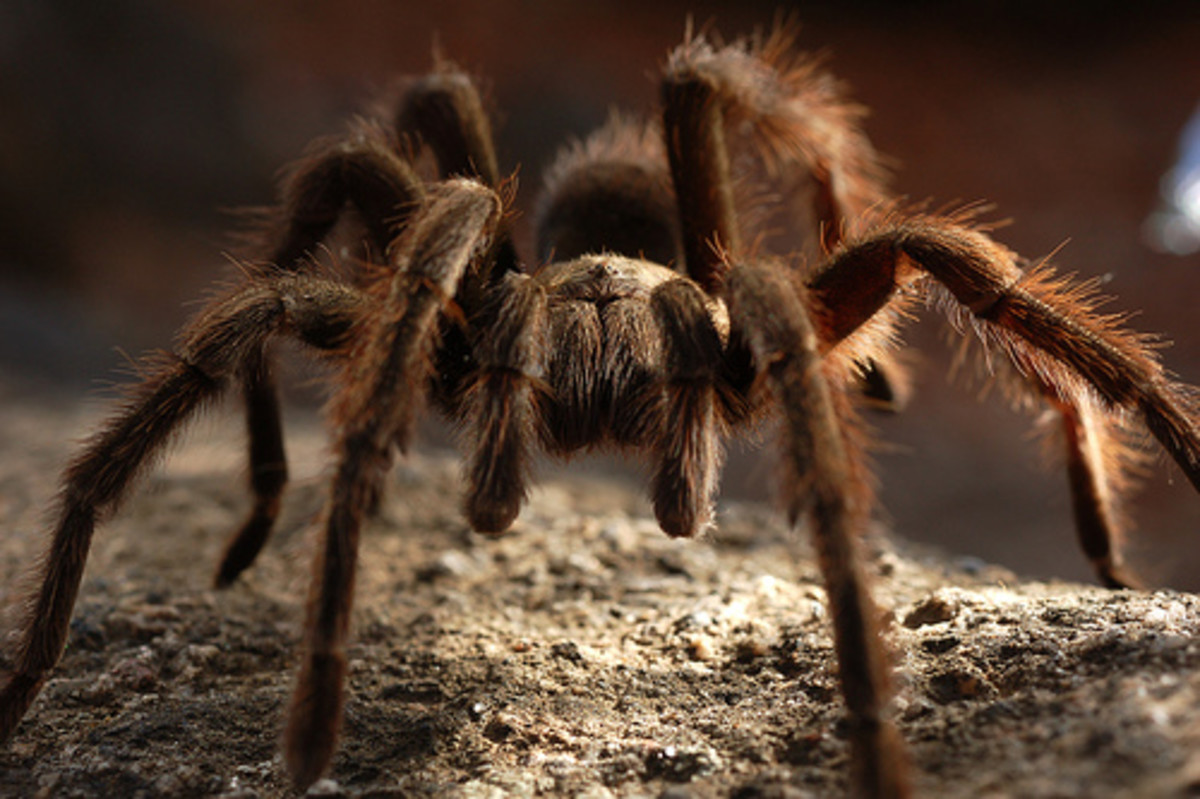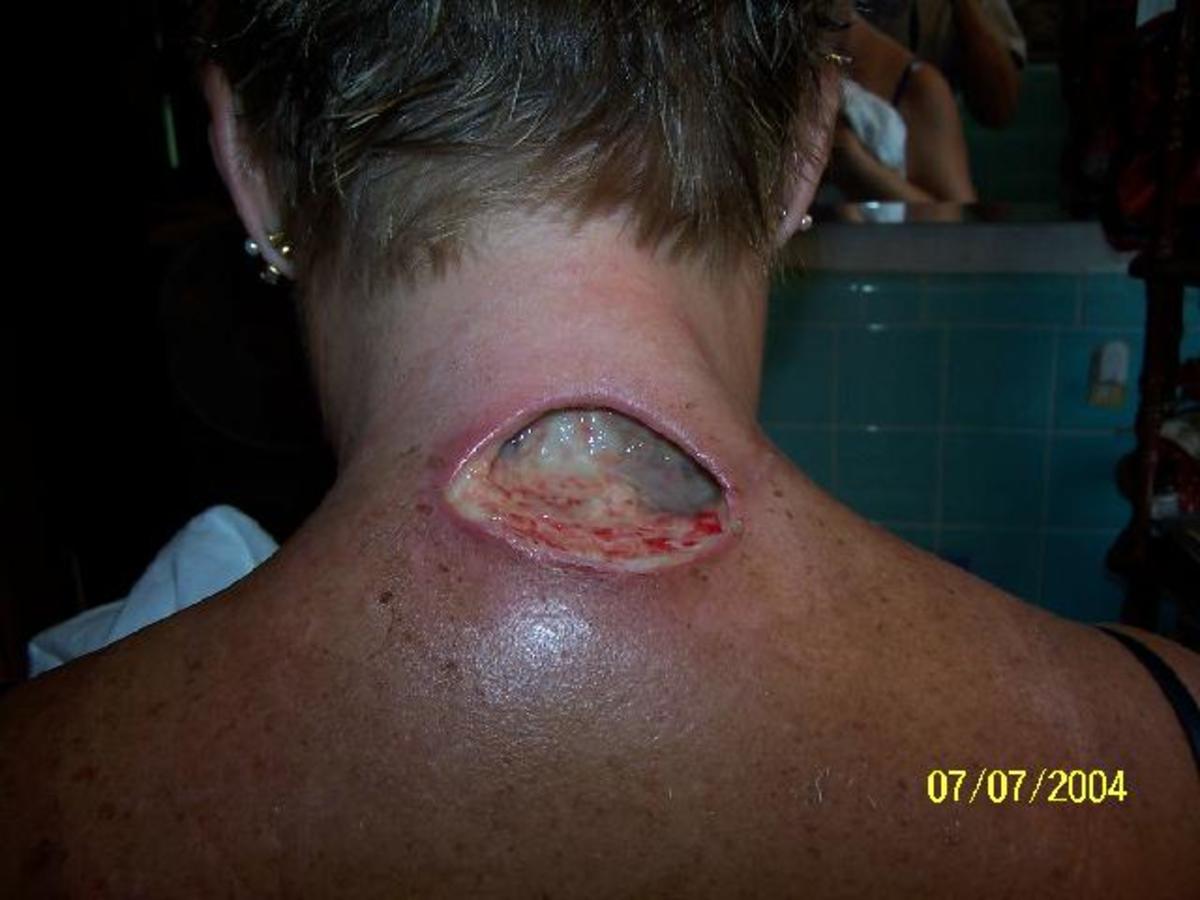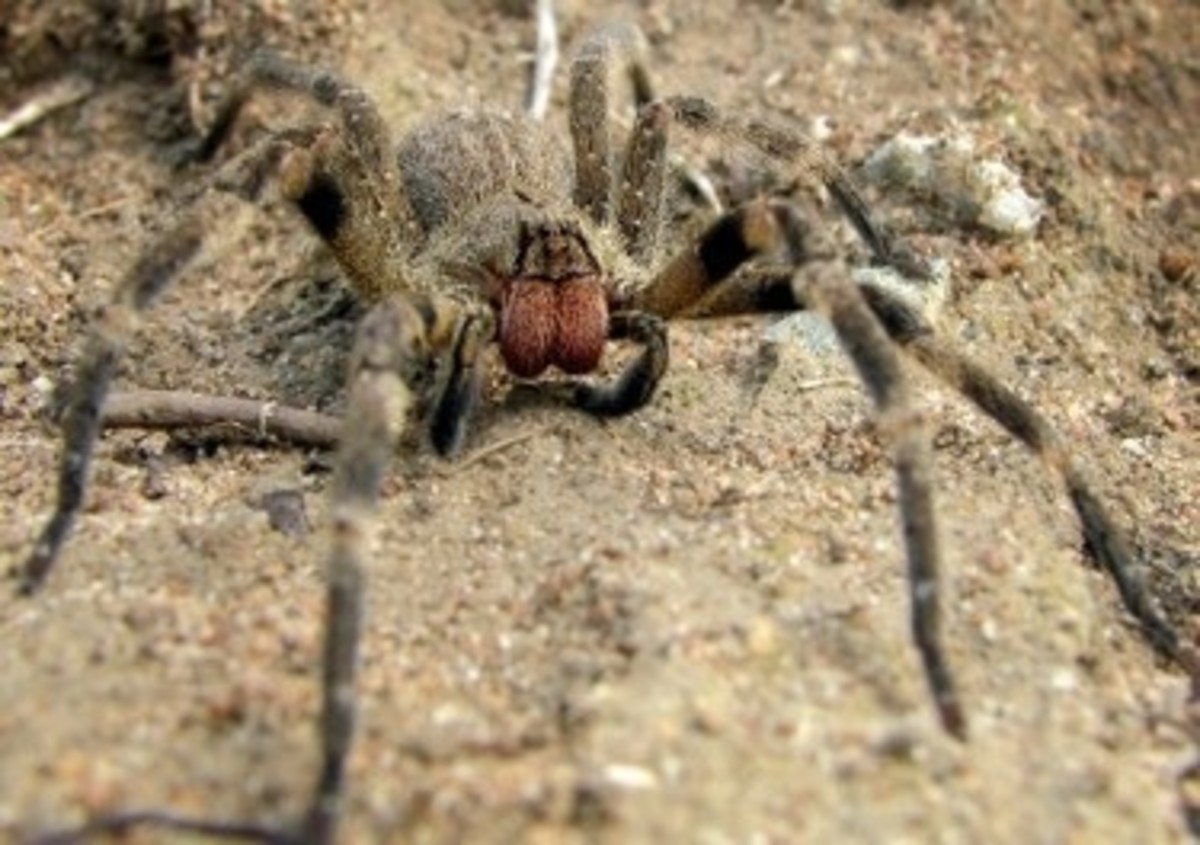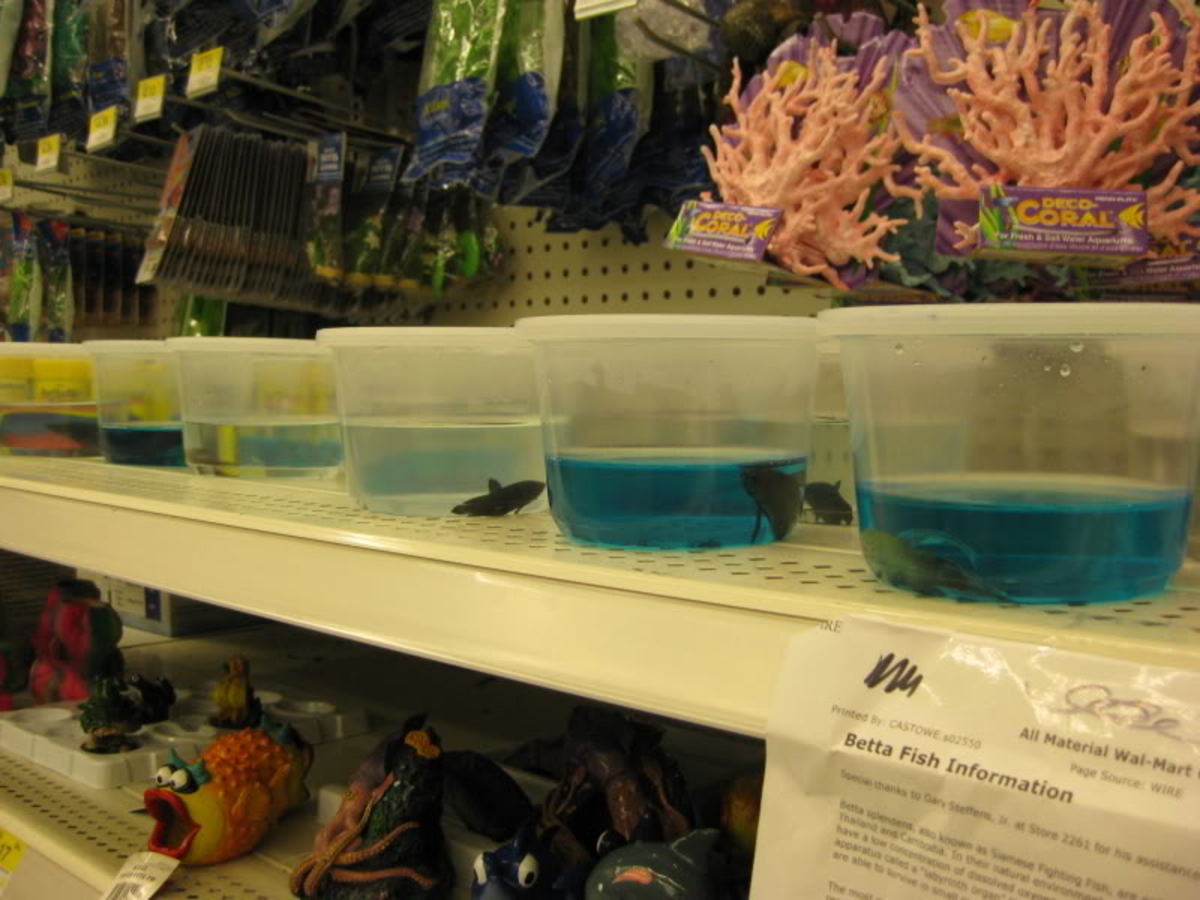The Worlds Deadliest Spider Species
Red Widow
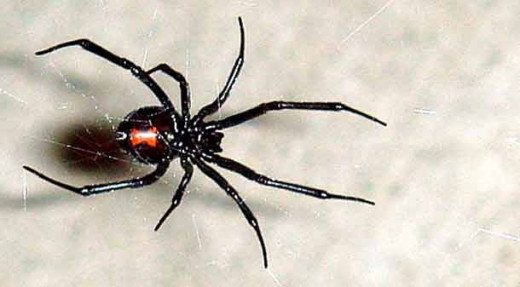
Are Spiders REALLY dangerous?
Of the thousands of known spider species, there are relatively few that actually pose a significant threat to humans. Spider mouth parts are designed to envenom very small mammals. Those that possess levels of toxins high enough to actually prove harmful to humans, don't necessarily have a bite strong enough to penetrate human skin, and, even if they do, they may not deliver enough of their venom to cause any real harm - even though the affected person may feel a lot of pain and discomfort for a few days after being bitten.
However, there are five spiders in particular that have come to be known as the world's most venomous - and what makes them even more of a worrying threat is the fact that most of them are aggressive.
Not only do all these spiders' bites have the capability of breaking human skin, the venom that each one delivers individually can wreak havoc on humans vital organs and, if medical treatment is not administered quickly after being bitten, can cause death.
So, in order from least to most venomous:
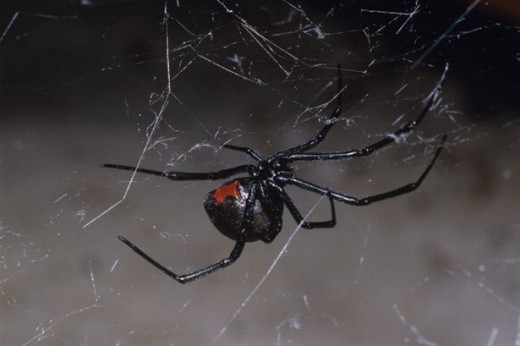
The Red Back Spider
The fifth most venomous spider is the ‘Red back’ spider or ‘Latrodectus Hasselti,’ which is closely related to the Black Widow, and can be found in India, the Philippines, Indonesia and New Caledonia, but is native to, and most widely spread in, Australia. It is closely related to the black widow spider, and is often mistaken for one as they look fairly similar at a quick glance.
The red back spider is small and black, with females having a body length of just one centimeter and males even less – typically growing to have a body length of just three to four millimeters. They are so-called due to the presence of a red or orange longitudinal stripe down the upper abdomen.
Red back venom is thought to be the most deadly venom of any Australian spider in the same quantities. A red spot usually appears at the puncture site, and if the spider has injected enough venom symptoms can include extreme pain and discomfort, abdominal and chest pain, nausea, vomiting, sweating, hypertension, fever, headaches and swelling around the affected area.
Though the bites can cause a lot of pain and discomfort, no fatalities have been recorded since 1956 when the anti-venom was discovered.
On the 20th August I stumbled across an article from the Irish Mirror online which said that a father of 5 children died two days ago and it is suspected that the internal bleeding which eventually caused his death was a result of being bitten by a red back spider, though this hasn't been confirmed yet. I will update this article when there is further news, but my heart goes out to his poor family who must be absolutely devastated.
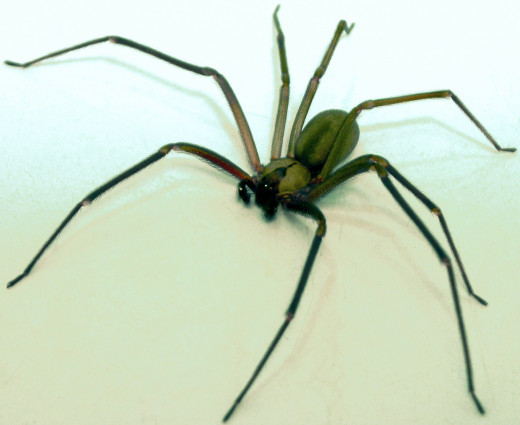
Brown Recluse
The Brown Recluse spider, also known as the ‘violin’ or ‘fiddle back’ spider due to markings on its body, is native to central America and is actually very shy by nature – hence it’s common name ‘Brown Recluse.’ Its Latin name is ‘Loxosceles Reclusa,’ and it is known to be one of the most venomous spiders in the world. Not only is it capable of delivering a large amount of venom, but its venom has a necrotic effect on human flesh.
The initial bite may not feel very painful as the Recluse is a small spider and has very small fangs, but afterwards an ulcer will appear at the affected area, which is the beginning of the tissue breaking down. This can take up to a week to appear and months to heal, even with medical treatment and is extremely painful. Mild to intense pain may be experienced a few hours after being bitten, accompanied by itching, nausea, fever, chills and vomiting.
The body is typically light to dark brown all over in color, the legs lack spines and, unlike most other spiders, the Brown Recluse has just six eyes – arranged in three pairs, in a semi-circle on the fore-part of the cephalothorax. This is the most definitive way of telling the Brown Recluse apart from other species.
They typically build their webs in undisturbed, quiet and dry places such as cellars and sheds and leave their webs at night to hunt for soft-bodied insects such as cockroaches and crickets. Incidents where humans are bitten are extremely uncommon and usually are the result of the spider being pressed against human skin – for instance, when one has crawled into a shirt that has been lying on the floor for a few days and is then put on.
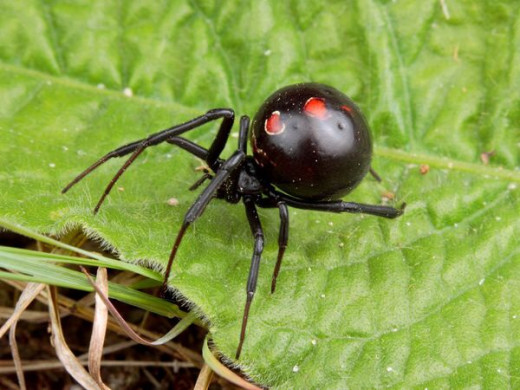
Spider Poll
Do Spiders Scare You?
Three: Black Widow Spider
Third on the ‘most venomous’ list is the infamous ‘Black Widow’ spider, which is part of the Theridiidae family and the genus ‘Lactrodectus.’ The name came about because the female eats the male almost immediately after mating – this is so she has enough energy to produce the eggs and healthy offspring. However, many female spiders belonging to different species exhibit this same behaviour for the same purpose, so it is not only Black Widows that eat their mate.
It is recognized in this particular species that the males venom is pretty much harmless to humans, it is only the females that can cause serious discomfort and, in rare circumstances, death.
The Black Widow is famous for bearing a red, hourglass-shape on the ventral abdomen – though it can sometimes be white or yellow, or even two, red dots rather than an hourglass. Apart from these markings, the spider has a shiny, black body and is quite small – the diameter generally being around one and a quarter centimeters, though the exact shape, size and coloration differs between each individual specimen.
Bites from the black widow spider are very rarely fatal if medical assistance is given quickly. However, the neurotoxin that this particular spider releases, known as ‘latrotoxin,’ can be very harmful to humans. Symptoms of being bitten include delayed breathing, restlessness, high blood pressure, extreme sweating, muscle cramps, tachycardia and potentially death, if left untreated.
Scoop Up Spiders Safely
Two: Sydney Funnel Web Spider
The second most venomous spider in the world is, undoubtedly, the Sydney Funnel Web Spider, also known as ‘Atrax robustus,’ which belongs to the Hexathelidae family. This spider has two, large, black fangs that point downward, measuring one centimeter or more in length. The fangs are extremely powerful and are capable of penetrating soft footwear.
The Sydney funnel web spider is native to southern Australia and builds its burrow in cool, moist places such as among foliage, under rocks and in dead trees. The body is usually one to five centimeters and is typically blue-black or dark brown, with a shiny carapace. Males of this species are very aggressive, particularly during summer months, during which time they wander trying to find a female mate.
Some studies have suggested that the venom of the males is six times more potent than that of females and juveniles – the venom of the male can cause death in just 15 minutes. Due to both the size of the fangs and the biochemical action of the venom, the initial bite is extremely painful and will normally cause bleeding as well as two very visible puncture marks.
Symptoms can appear within just a few minutes and progress rapidly. These include: goosebumps, confusion, high blood pressure, nausea and vomiting, sweating, increased heart rate, watery eyes, agitation, involuntary twitching, salivation, shortness of breath and extreme hypo-tension, which is the main cause for death. Fortunately, there is an anti-venom available and this is effective against the venom of all funnel web spiders.
One of Those Photos That Makes You Itch...
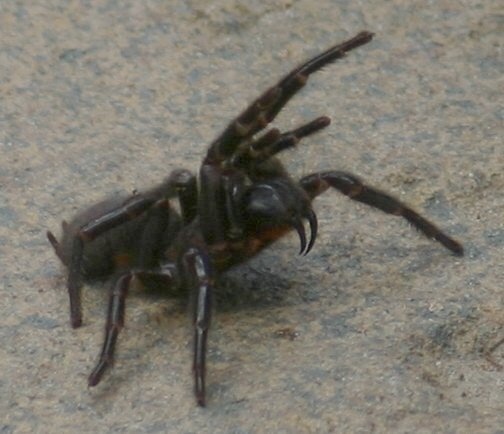
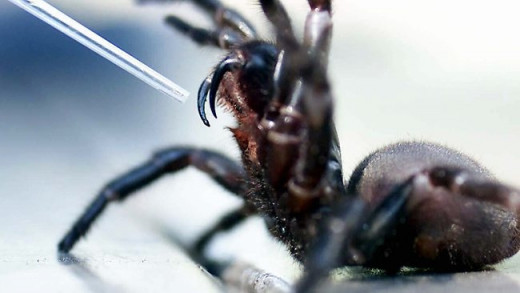
One: Brazilian Wandering Spider
The single most venomous and deadly spider in the world belongs to the Ctenidae family of ‘wandering spiders,’ and is known commonly as the ‘Brazilian Wandering Spider,’ due to the fact that it was first discovered in Brazil. Other names include ‘The Banana Spider,’ ‘The Armed Spider’ and my personal favourite - ‘Phoneutria,’ which is Greek for ‘Murderess,’ and actually refers to the genus this spider belongs to.
The Brazilian wandering spider can be found in Central and Southern America and is, unfortunately, found quite often in highly populated areas. It is by no means the world’s largest spider and has a leg span of up to five inches and a body length of up to one inch – due to its size, many people mistake Brazilian wandering spiders for tarantulas – luckily there are some easily distinguishable features to tell them apart.
Firstly, the body and legs are generally a light ‘sandy-brown’ in color, with a distinct, dark, linear stripe on the dorsal palps. A thin, single, black line also runs anterior to posterior along the dorsal carapace and the fangs are a dull red in color, which many find is one of their most distinct features, along with the fact that, unlike most spiders, it does not build a web and will actively hunt down mice, lizards, tree frogs and crickets.
If it feels threatened, a Brazilian wandering spider will raise its four front legs in a defensive display and sway side to side – a ‘warning dance’ to potential predators. The potent neurotoxin that the Brazilian wandering spider releases is known as PhTx3, and in high concentrated levels causes problems breathing, total loss of muscle control and even asphyxiation. Studies have shown that this spider only releases it’s venom in around one-third of total bites, however, regardless of whether or not venom in released, the bite is extremely painful.
If the venom is released, side effects include extremely severe pain, inflammation and, in men, erections that can last for hours and are extremely uncomfortable. A certain component of the venom, for this very reason, is being researched to see if it could help cure erectile dysfunction.



